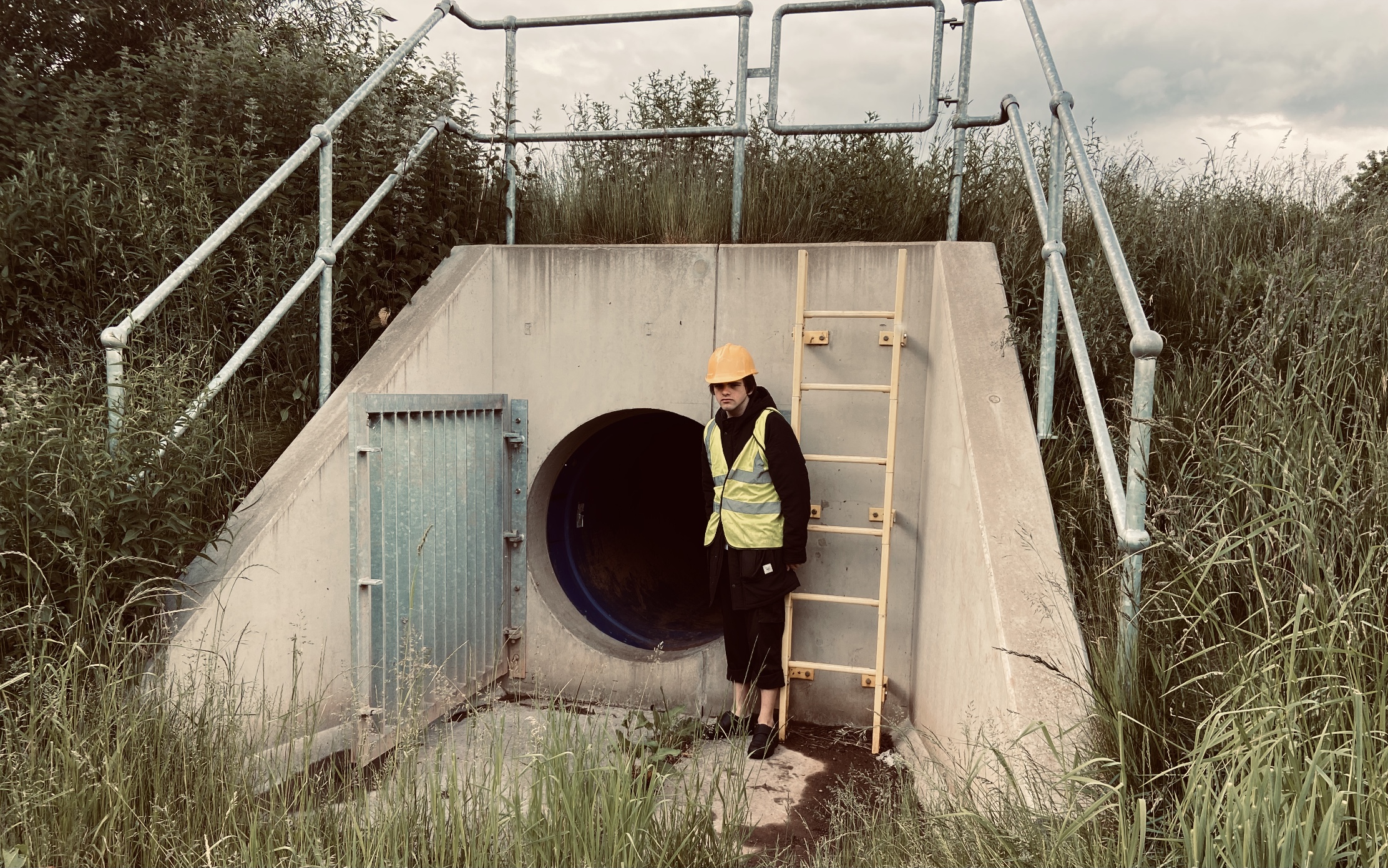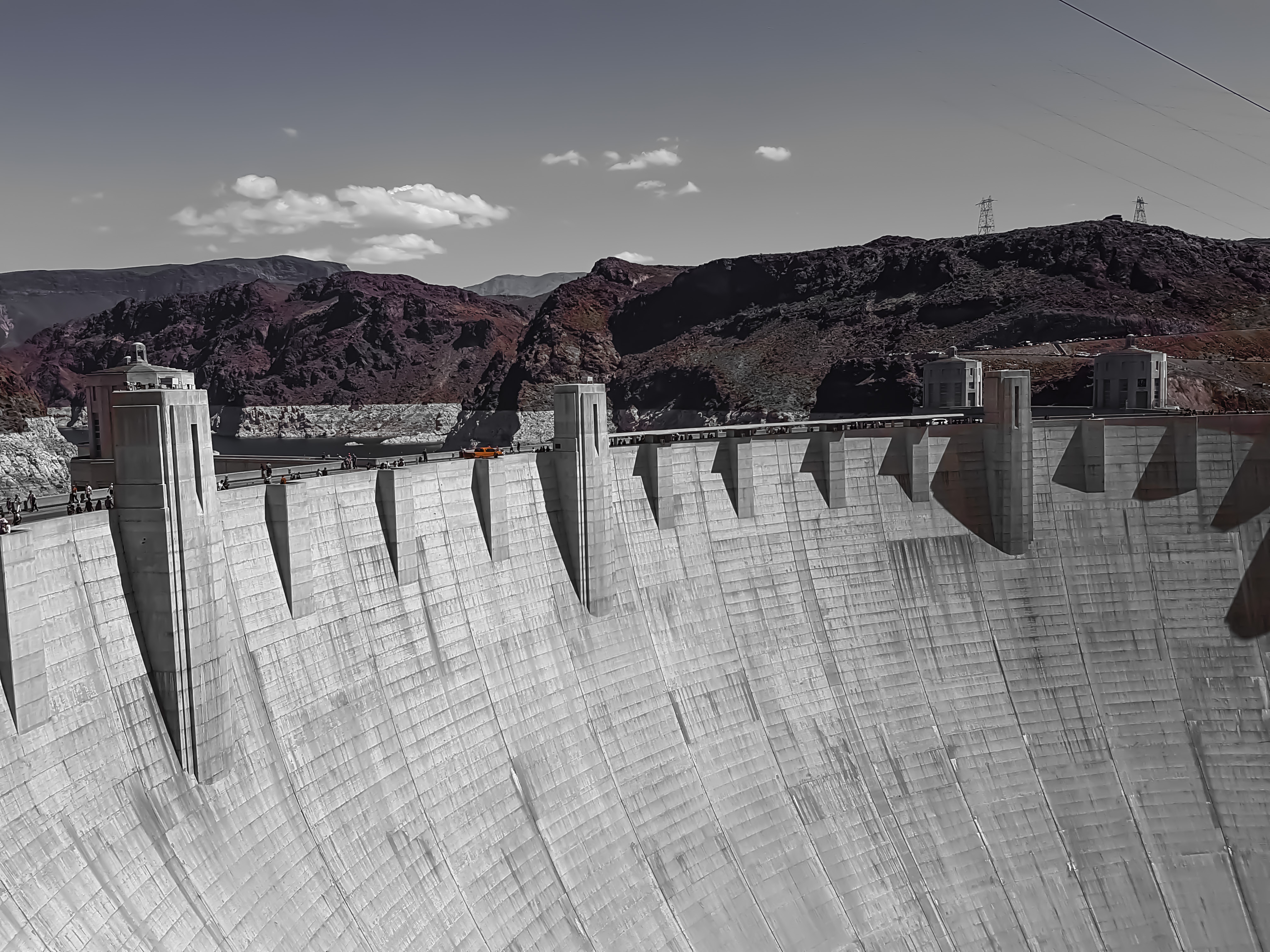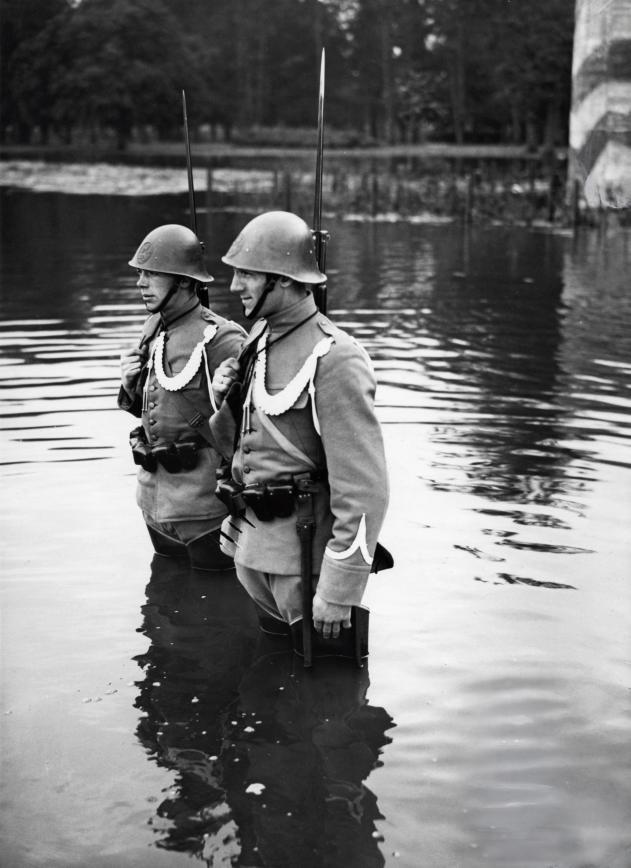|
Wessem-Nederweert Canal
Wessem-Nederweert Canal is a canal connecting the Zuid-Willemsvaart at Nederweert to the Meuse near Wessem. Here it meets the wide Juliana Canal that connects to Maastricht. Characteristics Dimensions The Wessem-Nederweert Canal is 17 km long, 2.5 meter deep, and varies in width from 30 to 50 meter. The maximum dimensions for ships on the canal are: length 96 m, beam 9,5 m, draft 2,10 m. This is CEMT IV with a draft limitation of 2.10 m. Structures Panheel Lock is the only lock on the canal. It is a double lock consisting of the original Panheel Lock, and a more recent larger lock next to it. The canal pound close to the Meuse has a much lower level than that west of Panheel Lock. There are 9 bridges over the canal. The air draft of the bridges is about 5 meter. Context and Plans The South Limburg coal fields During the Industrial Revolution, the Netherlands lacked iron as well as coal. In South Limburg, it had rich coal deposits, but almos ... [...More Info...] [...Related Items...] OR: [Wikipedia] [Google] [Baidu] |
Zuid-Willemsvaart
The Zuid-Willemsvaart (; translated: ''South William's Canal'') is a canal in the south of the Netherlands and the east of Belgium. Route The Zuid-Willemsvaart is a canal in the provinces Limburg (Netherlands), Limburg (Belgium) and North Brabant. Several important canals are connected to it, e.g. the Campine Canals and the Wilhelmina Canal. On its 122 km route it passes cities like Maastricht, Maasmechelen, Bree, Weert, Helmond and 's-Hertogenbosch. Nowadays most commercial shipping activity on the canal is local. History Plans Previous to the construction of the Zuid-Willemsvaart there were many plans for making a canal from 's-Hertogenbosch towards the Belgian border. Most of these centered on canalizing the Aa, the stream bed of which is closely followed by the Zuid-Willemsvaart for most of its route. The geographical proximity to the Aa indicates a relation between these older plans and the construction of the Zuid-Willemsvaart, but the relation is only in t ... [...More Info...] [...Related Items...] OR: [Wikipedia] [Google] [Baidu] |
Hanja Maij-Weggen
Johanna Rika Hermanna "Hanja" Maij-Weggen (born 29 December 1943) is a retired Dutch politician of the Christian Democratic Appeal (CDA). From 1989 until 1994 she was Minister of Transport, Public Works and Water Management in the third cabinet of prime minister Ruud Lubbers, and from 2003 until 2009 the Queen's Commissioner of the province of North Brabant. After a nursing education from 1962 until 1965 she studied Pedagogy and History of Art at the University of Amsterdam until 1971. In 1967, she started working as a healthcare teacher in Amstelveen and Apeldoorn. In 1979, her political career started when she became a member of the European Parliament. In 1989, she temporarily left the European Parliament to become the Dutch Minister of Transport, Public Works and Water Management. Four years later, she returned to the European Parliament where she remained until 1 October 2003 when she became the Queen's Commissioner for the province of North Brabant. She retired on 1 Octob ... [...More Info...] [...Related Items...] OR: [Wikipedia] [Google] [Baidu] |
Culvert
A culvert is a structure that channels water past an obstacle or to a subterranean waterway. Typically embedded so as to be surrounded by soil, a culvert may be made from a pipe, reinforced concrete or other material. In the United Kingdom, the word can also be used for a longer artificially buried watercourse. Culverts are commonly used both as cross-drains to relieve drainage of ditches at the roadside, and to pass water under a road at natural drainage and stream crossings. When they are found beneath roads, they are frequently empty. A culvert may also be a bridge-like structure designed to allow vehicle or pedestrian traffic to cross over the waterway while allowing adequate passage for the water. Culverts come in many sizes and shapes including round, elliptical, flat-bottomed, open-bottomed, pear-shaped, and box-like constructions. The culvert type and shape selection is based on a number of factors including requirements for hydraulic performance, limitations on ... [...More Info...] [...Related Items...] OR: [Wikipedia] [Google] [Baidu] |
Ministry Of Transport And Water Management (Netherlands)
The Ministry of Transport, Public Works and Water Management (Dutch: ''Ministerie van Verkeer en Waterstaat''; V&W) was a Dutch ministry responsible for water management, public and private transport and infrastructure. It is now part of the Ministry of Infrastructure and Water Management. Responsibilities The motto of the ministry was: "familiar with water, progressive with connections". The ministry had two main responsibilities: * Regulation and management of transport of people and goods via roads, trains, boats and airplanes * Water management by water works, such as dikes, polders and channels Organisation The ministry was headed by one minister and one state secretary. The ministry's main office was located in the centre of The Hague. The civil service was headed by a secretary general and a deputy secretary general, who headed a system of four directorates general: * Passenger transport * Freight transport of goods and civil aviation * Water Affairs * Public Works and ... [...More Info...] [...Related Items...] OR: [Wikipedia] [Google] [Baidu] |
Sluis Panheel, Ostseite
Sluis (; zea, label= Zeelandic, Sluus ; french: Écluse) is a town and municipality located in the west of Zeelandic Flanders, in the south-western Dutch province of Zeeland. The current incarnation of the municipality has existed since 1 January 2003. The former municipalities of Oostburg and Sluis-Aardenburg merged on that date. The latter of these two municipalities was formed from a merger between the previous municipality named Sluis and the former municipality of Aardenburg in 1995. History The town received city rights in 1290. In 1340 the Battle of Sluys was fought nearby at sea during the Hundred Years' War. There is a record of one of the first lotteries with money on 9 May 1455 of 1737 florins (US$170,000, in 2014). During the Eighty Years' War in 1587 the town was captured by Spanish troops under the Duke of Parma and was retaken in 1604 by a Dutch and English force under Maurice of Nassau. From 2006 until its closure in 2013, Oud Sluis was one of only tw ... [...More Info...] [...Related Items...] OR: [Wikipedia] [Google] [Baidu] |
Concrete
Concrete is a composite material composed of fine and coarse aggregate bonded together with a fluid cement (cement paste) that hardens (cures) over time. Concrete is the second-most-used substance in the world after water, and is the most widely used building material. Its usage worldwide, ton for ton, is twice that of steel, wood, plastics, and aluminum combined. Globally, the ready-mix concrete industry, the largest segment of the concrete market, is projected to exceed $600 billion in revenue by 2025. This widespread use results in a number of environmental impacts. Most notably, the production process for cement produces large volumes of greenhouse gas emissions, leading to net 8% of global emissions. Other environmental concerns include widespread illegal sand mining, impacts on the surrounding environment such as increased surface runoff or urban heat island effect, and potential public health implications from toxic ingredients. Significant research and developmen ... [...More Info...] [...Related Items...] OR: [Wikipedia] [Google] [Baidu] |
Gravel
Gravel is a loose aggregation of rock fragments. Gravel occurs naturally throughout the world as a result of sedimentary and erosive geologic processes; it is also produced in large quantities commercially as crushed stone. Gravel is classified by particle size range and includes size classes from granule- to boulder-sized fragments. In the Udden-Wentworth scale gravel is categorized into granular gravel () and pebble gravel (). ISO 14688 grades gravels as fine, medium, and coarse, with ranges 2–6.3 mm to 20–63 mm. One cubic metre of gravel typically weighs about 1,800 kg (or a cubic yard weighs about 3,000 lb). Gravel is an important commercial product, with a number of applications. Almost half of all gravel production is used as aggregate for concrete. Much of the rest is used for road construction, either in the road base or as the road surface (with or without asphalt or other binders.) Naturally occurring porous gravel deposits have a ... [...More Info...] [...Related Items...] OR: [Wikipedia] [Google] [Baidu] |
German Invasion Of The Netherlands
The German invasion of the Netherlands ( nl, Duitse aanval op Nederland), otherwise known as the Battle of the Netherlands ( nl, Slag om Nederland), was a military campaign part of Case Yellow (german: Fall Gelb), the Nazi German invasion of the Low Countries (Belgium, Luxembourg, and the Netherlands) and France during World War II. The battle lasted from 10 May 1940 until the surrender of the main Dutch forces on 14 May. Dutch troops in the province of Zeeland continued to resist the ''Wehrmacht'' until 17 May when Germany completed its occupation of the whole country. The invasion of the Netherlands saw some of the earliest mass paratroop drops, to occupy tactical points and assist the advance of ground troops. The German ''Luftwaffe'' used paratroopers in the capture of several airfields in the vicinity of Rotterdam and The Hague, helping to quickly overrun the country and immobilise Dutch forces. After the devastating Nazi bombing of Rotterdam by the ''Luftwaffe'' on 14 ... [...More Info...] [...Related Items...] OR: [Wikipedia] [Google] [Baidu] |
Rijkswaterstaat
Rijkswaterstaat, founded in 1798 as the ''Bureau voor den Waterstaat'' and formerly translated to Directorate General for Public Works and Water Management, is a Directorate-General of the Ministry of Infrastructure and Water Management of the Netherlands. Its role is the practical execution of the public works and water management, including the construction and maintenance of waterways and roads, and flood protection and prevention. The agency was also involved in the construction of big railway projects such as the Betuweroute and the HSL-Zuid. The mission of the organisation is: "Rijkswaterstaat is de rijksdienst die werkt aan droge voeten, schoon en voldoende water én aan de vlotte en veilige doorstroming van het verkeer" (Rijkswaterstaat is the national agency that provides dry feet, clean and sufficient water and a quick and safe flow of traffic). The agency is divided in 10 regional, 6 specialist services and 2 special services. As of 15 May 2017, the director-general ( ... [...More Info...] [...Related Items...] OR: [Wikipedia] [Google] [Baidu] |
Nederlandse Spoorwegen
Nederlandse Spoorwegen (NS; ; en, "Dutch Railways") is the principal passenger railway operator in the Netherlands. It is a Dutch state-owned company founded in 1938. The Dutch rail network is one of the busiest in the European Union, and the third busiest in the world after Switzerland and Japan. The rail infrastructure is maintained by network manager ProRail, which was split off from NS in 2003. Freight services, formerly operated by NS Cargo, merged with DB Schenker in 2000. NS runs 4,800 scheduled domestic trains a day, serving 1.1 million passengers. The NS also provides international rail services from the Netherlands to other European destinations and carries out concessions on some foreign rail markets through its subsidiary Abellio. History Early years World War I caused an economic downturn in the Netherlands that caused the two largest Dutch railway companies, Hollandsche IJzeren Spoorweg-Maatschappij (HSM) and Maatschappij tot Exploitatie van Staa ... [...More Info...] [...Related Items...] OR: [Wikipedia] [Google] [Baidu] |
Ruhr
The Ruhr ( ; german: Ruhrgebiet , also ''Ruhrpott'' ), also referred to as the Ruhr area, sometimes Ruhr district, Ruhr region, or Ruhr valley, is a polycentric urban area in North Rhine-Westphalia, Germany. With a population density of 2,800/km2 and a population of over 5 million (2017), it is the largest urban area in Germany. It consists of several large cities bordered by the rivers Ruhr to the south, Rhine to the west, and Lippe to the north. In the southwest it borders the Bergisches Land. It is considered part of the larger Rhine-Ruhr metropolitan region of more than 10 million people, which is the third largest in Europe, behind only London and Paris. The Ruhr cities are, from west to east: Duisburg, Oberhausen, Bottrop, Mülheim an der Ruhr, Essen, Gelsenkirchen, Bochum, Herne, Hagen, Dortmund, Lünen, Bergkamen, Hamm and the districts of Wesel, Recklinghausen, Unna and Ennepe-Ruhr-Kreis. The most populous cities are Dortmund (with a population of approx ... [...More Info...] [...Related Items...] OR: [Wikipedia] [Google] [Baidu] |







.jpg)

